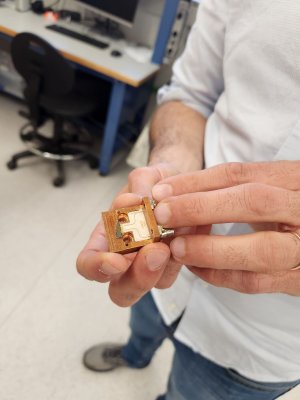Researchers demonstrate room temperature chirality switching and detection in a helimagnetic thin film
Researchers from Tohoku University and Toho University have demonstrated chirality switching by electric current pulses at room temperature in a thin-film MnAu2 helimagnetic conductor. The team also succeeded in detecting the chirality at zero magnetic fields by means of simple transverse resistance measurement utilizing the spin Berry phase in a bilayer device composed of MnAu2 and a spin Hall material Pt. These results may pave the way to helimagnet-based spintronics.
Helimagnetic structures, in which the magnetic moments are spirally ordered, host an internal degree of freedom called chirality corresponding to the handedness of the helix. The chirality seems quite robust against disturbances and is therefore promising for next-generation magnetic memory. While the chirality control was recently achieved by the magnetic field sweep with the application of an electric current at low temperature in a conducting helimagnet, problems such as low working temperature and cumbersome control and detection methods have to be solved in practical applications.
